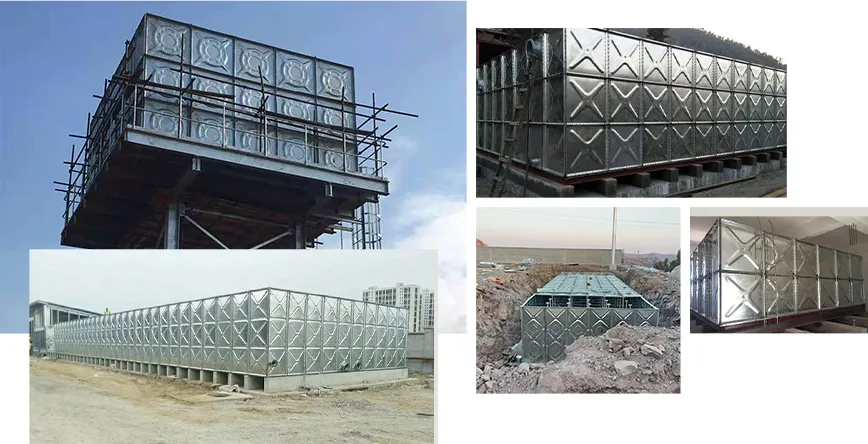loading...
- No. 9, Xingyuan South Street, Dongwaihuan Road, Zaoqiang County, Hengshui, Hebei, China
- admin@zjcomposites.com
- +86 15097380338
- Welcome to visit our website!
frp pultruded profiles
Understanding FRP Pultruded Profiles Applications and Benefits
Fiber Reinforced Polymer (FRP) pultruded profiles are gaining prominence in various industries due to their unique properties and versatile applications. Pultrusion is a manufacturing process that produces continuous lengths of composite material with a constant cross-section. This process involves pulling fibers, typically glass or carbon, through a resin bath and then through a heated die to cure the material. The resulting profiles combine the strength and lightweight characteristics of fiber materials with the corrosion resistance and durability offered by polymers.
The Composition and Properties of FRP Pultruded Profiles
FRP pultruded profiles are primarily composed of a reinforcing fiber (often glass, carbon, or aramid) and a polymer matrix (such as epoxy, polyester, or vinyl ester). The selection of fibers and resins significantly influences the material properties, allowing engineers to customize profiles according to specific application requirements. Some key properties of FRP pultruded profiles include
1. High Strength-to-Weight Ratio FRP profiles are lightweight yet exhibit impressive tensile and compressive strength. This unique characteristic allows for reduced transportation costs and easier handling during construction or installation.
2. Corrosion Resistance Unlike traditional materials such as steel or aluminum, FRP does not corrode when exposed to harsh environmental conditions, making it ideal for applications in chemical plants, marine environments, and infrastructure subject to moisture.
3. Low Thermal Conductivity FRP materials are poor conductors of heat, offering advantages in thermal insulation applications. This property makes them suitable for use in specialized environments where temperature management is critical.
4. Electrical Insulation FRP profiles are non-conductive, making them perfect for applications in electrical infrastructure and signaling systems, reducing the risk of electrical hazards.
frp pultruded profiles

Applications of FRP Pultruded Profiles
Due to their advantageous properties, FRP pultruded profiles find applications across a wide range of industries, including
1. Construction In the construction industry, FRP profiles are utilized for making structural elements such as beams, columns, and reinforcements. Their lightweight nature reduces the load on foundations and supports, while their durability enhances the lifespan of structures.
2. Infrastructure FRP profiles are employed in constructing bridges, walkways, and boardwalks due to their resistance to weathering and corrosion. Their design flexibility allows for innovative and aesthetically pleasing architectural solutions.
3. Marine Applications The maritime industry benefits from FRP profiles in boat hulls, docks, and dockside structures. Their resistance to saltwater and high-strength performance under dynamic loads makes them well-suited for marine environments.
4. Energy Sector In wind energy, FRP pultruded profiles are used in turbine blades and towers because they can withstand significant stress while being lightweight. Similarly, solar panel mounting systems often utilize FRP components.
5. Electricity and Telecommunications FRP poles and supports are increasingly used for power lines and telecommunication installations. Their non-conductive properties and resistance to environmental degradation make them a reliable choice.
Conclusion
FRP pultruded profiles present a compelling solution across various sectors due to their remarkable strength, lightweight nature, and superior resistance to environmental factors. As industries continue to prioritize sustainability and efficiency, the adoption of FRP materials is expected to grow, reflecting a broader trend towards innovative manufacturing processes and sustainable materials. With ongoing advancements in technology and material science, the potential applications of FRP pultruded profiles are limitless, paving the way for a more resilient and efficient future in construction, energy, and infrastructure. As awareness of the benefits of these materials increases, FRP profiles are poised to become an integral part of modern engineering and design.
-
The Rise of FRP Profiles: Strong, Lightweight, and Built to LastNewsJul.14,2025
-
SMC Panel Tanks: A Modern Water Storage Solution for All EnvironmentsNewsJul.14,2025
-
GRP Grating: A Modern Solution for Safe and Durable Access SystemsNewsJul.14,2025
-
Galvanized Steel Water Tanks: Durable, Reliable, and Ready for UseNewsJul.14,2025
-
FRP Mini Mesh Grating: The Safer, Smarter Flooring SolutionNewsJul.14,2025
-
Exploring FRP Vessels: Durable Solutions for Modern Fluid HandlingNewsJul.14,2025
-
GRP Structures: The Future of Lightweight, High-Performance EngineeringNewsJun.20,2025
